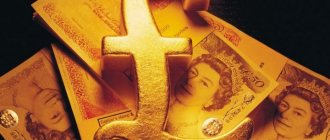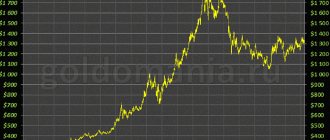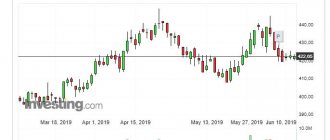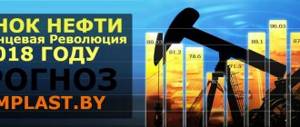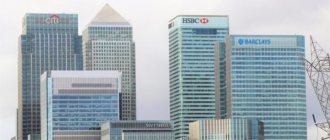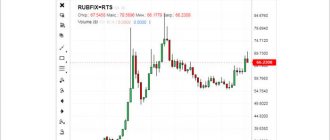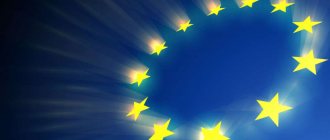Goldman Sachs confirms gold forecast for 2021
Favorites
Precious metals market review: May 17-23, 2021
The past week was positive for the gold and silver markets, whose prices rose against the backdrop of dollar weakness. US Treasury yields fell. Gold was supported by the fall in cryptocurrencies.
Gold coin "European Football Championship 2020"
On May 12, 2021, the Bank of Russia issued a commemorative gold coin with a face value of 50 rubles “European Football Championship 2020 (UEFA EURO 2020).” The side surface of the coin is grooved.
Gold coin market from May 17 to 23, 2021
The precious metal's rally continued. Now one troy ounce of gold costs $1,880. The immediate reason for the increase in quotations was that the Bitcoin “bubble” had seriously deflated: from 58 to 34 thousand dollars.
May 2021: gold price above $1800
Gold investors around the world can breathe a sigh of relief after one ounce of the yellow precious metal broke through the important resistance level of $1,800. This was reported by the Kitco News agency.
Which gold coins are suitable for investment?
There are a lot of gold coins in the world. But not every gold coin can be considered an investment coin. When investing in gold, you need to immediately find out which coins are best suited for this.
ZMD: gold price forecast for 2021
Euphoria about the vaccine is now premature. The pandemic is not going away from the agenda. The yield of the yellow precious metal this year was in the range of 16-30%. According to the IMF forecast, real GDP growth will stabilize in 2021.
Bitcoin will not replace gold!
Deutsche Bank's Jim Reed recently said that Bitcoin is a better hedge against inflation and currency risks than gold. The reason for the statement was the growth of digital currency by 17%.
5 tips for beginners to invest in gold
New private investors are constantly entering the gold market and are just beginning to be interested in buying gold. They have doubts about when is the best time to invest and what is the best thing to buy. Below are some tips.
Rules for purchasing gold coins and bars
Gold coins and bars are the best way to protect capital from a crisis. When purchasing them, it is important to follow several rules. One of them says: when buying gold, you should immediately think about selling it.
Why is it better to buy gold coins than bars?
Many novice investors often ask the same question: is it better to invest in gold coins or bars? There are several reasons why buying gold coins is the best choice.
Goldman Sachs Group, Inc. Reserves Forecast
May 30. 2021 Goldman Sachs Group, Inc. stock bullish performance. expected with an optimal forecast of 366.78 and daily volatility of 0.714%.
Pessimistic forecast: 365.65
Optimistic: 368.28
May 31. 2021 bearish stock performance of Goldman Sachs Group, Inc. expected with an optimal forecast of 366.10 and daily volatility of 0.743%.
Pessimistic forecast: 364.86
Optimistic: 367.59
June 01, 2021 Goldman Sachs Group, Inc. stock bullish performance. expected with an optimal forecast of 366.55 and daily volatility of 0.717%.
Pessimistic forecast: 365.40
Optimistic: 368.04
June 02, 2021 bullish stock performance of Goldman Sachs Group, Inc. expected with an optimal forecast of 368.11 and daily volatility of 0.593%.
Pessimistic forecast: 366.94
Optimistic: 369.13
June 03, 2021 Goldman Sachs Group, Inc. stock is bearish. expected with an optimal forecast of 367.76 and daily volatility of 0.572%.
Pessimistic forecast: 366.68
Optimistic: 368.79
June 04, 2021 Goldman Sachs Group, Inc. stock is bearish. expected with an optimal forecast of 366.95 and daily volatility of 0.730%.
Pessimistic forecast: 365.69
Optimistic: 368.38
June 05, 2021 Goldman Sachs Group, Inc. stock bullish performance. expected with an optimal forecast of 367.90 and daily volatility of 0.629%.
Pessimistic forecast: 366.79
Optimistic: 369.11
June 06, 2021 Goldman Sachs Group, Inc. stock is bearish. expected with an optimal forecast of 366.04 and daily volatility of 0.572%.
Pessimistic forecast: 364.94
Optimistic: 367.04
June 07, 2021 Goldman Sachs Group, Inc. stock is bearish. expected with an optimal forecast of 366.01 and daily volatility of 0.730%.
Pessimistic forecast: 364.66
Optimistic: 367.34
June 08, 2021 Goldman Sachs Group, Inc. stock bullish performance. expected with an optimal forecast of 366.47 and daily volatility of 0.772%.
Pessimistic forecast: 365.00
Optimistic: 367.84
June 09, 2021 Goldman Sachs Group, Inc. stock bullish performance. expected with an optimal forecast of 367.66 and daily volatility of 0.572%.
Pessimistic forecast: 366.65
Optimistic: 368.76
June 10, 2021 Goldman Sachs Group, Inc. stock bullish performance. expected with an optimal forecast of 368.63 and daily volatility of 0.630%.
Pessimistic forecast: 367.48
Optimistic: 369.81
June 11, 2021 Goldman Sachs Group, Inc. stock bullish performance. expected with an optimal forecast of 369.29 and daily volatility of 0.661%.
Pessimistic forecast: 368.01
Optimistic: 370.46
June 12, 2021 Goldman Sachs Group, Inc. stock bullish performance. expected with an optimal forecast of 370.45 and daily volatility of 0.676%.
Pessimistic forecast: 369.00
Optimistic: 371.51
June 13, 2021 Goldman Sachs Group, Inc. stock is bearish. expected with an optimal forecast of 370.35 and daily volatility of 0.791%.
Pessimistic forecast: 368.86
Optimistic: 371.80
June 14, 2021 bullish stock performance of Goldman Sachs Group, Inc. expected with an optimal forecast of 371.14 and daily volatility of 0.605%.
Pessimistic forecast: 369.92
Optimistic: 372.17
June 15, 2021 Goldman Sachs Group, Inc. stock bullish performance. expected with an optimal forecast of 371.15 and daily volatility of 0.685%.
Pessimistic forecast: 369.97
Optimistic: 372.52
June 16, 2021 Goldman Sachs Group, Inc. stock is bearish. expected with an optimal forecast of 370.61 and daily volatility of 0.691%.
Pessimistic forecast: 369.40
Optimistic: 371.97
June 17, 2021 Goldman Sachs Group, Inc. stock bullish performance. expected with an optimal forecast of 370.79 and daily volatility of 0.680%.
Pessimistic forecast: 369.57
Optimistic: 372.10
June 18, 2021 Goldman Sachs Group, Inc. stock bullish performance. expected with an optimal forecast of 371.78 and daily volatility of 0.670%.
Pessimistic forecast: 370.71
Optimistic: 373.21
June 19, 2021 Goldman Sachs Group, Inc. stock bullish performance. expected with an optimal forecast of 374.55 and daily volatility of 0.718%.
Pessimistic forecast: 373.27
Optimistic: 375.97
June 20, 2021 Goldman Sachs Group, Inc. stock bullish performance. expected with an optimal forecast of 375.72 and daily volatility of 0.642%.
Pessimistic forecast: 374.59
Optimistic: 377.01
June 21, 2021 Goldman Sachs Group, Inc. stock bullish performance. expected with an optimal forecast of 376.53 and daily volatility of 0.722%.
Pessimistic forecast: 375.14
Optimistic: 377.87
June 22, 2021 Goldman Sachs Group, Inc. stock is bearish. expected with an optimal forecast of 376.47 and daily volatility of 0.630%.
Pessimistic forecast: 375.30
Optimistic: 377.68
June 23, 2021 Goldman Sachs Group, Inc. stock is bearish. expected with an optimal forecast of 375.72 and daily volatility of 0.658%.
Pessimistic forecast: 374.66
Optimistic: 377.14
June 24, 2021 Goldman Sachs Group, Inc. stock is bearish. expected with an optimal forecast of 375.44 and daily volatility of 0.677%.
Pessimistic forecast: 374.07
Optimistic: 376.62
June 25, 2021 Goldman Sachs Group, Inc. stock bullish performance. expected with an optimal forecast of 376.75 and daily volatility of 0.688%.
Pessimistic forecast: 375.33
Optimistic: 377.93
June 26, 2021 Goldman Sachs Group, Inc. stock is bearish. expected with an optimal forecast of 375.86 and daily volatility of 0.576%.
Pessimistic forecast: 374.77
Optimistic: 376.94
Goldman Sachs predicts ruble recovery
Analysts at Goldman Sachs believe that the ruble exchange rate, after the recent collapse to 75 per dollar, will return to the rate of 61 rubles within two years. According to bank experts, oil prices will remain at $30 per barrel over the next six months. After this, the price will gradually increase to $60 per barrel. This, according to experts, will take two years.
“We believe that in this scenario the ruble will initially depreciate to 75 rubles per dollar and then begin to rise to 61 rubles,” said Goldman Sachs analyst Clemens Graf.
In his opinion, with an expected oil price of $30 per barrel, the ruble will remain at 75 per dollar during the second and third quarters. Over the next 12 months, the Russian national currency will strengthen to 68 rubles per dollar, and after 2.5 years - to 61 rubles per dollar.
Last Thursday, investment bank Goldman Sachs tried to reassure its jittery commercial bank clients by holding a conference call with its chief economist, Jan Hatzius, and chief medical officer, Michael Rendel. One of the meeting participants took notes and then made them public. This conversation, during which the bank tried to downplay the impact of the coronavirus on the global economy, was then replicated on social networks and through instant messengers such as WhatsApp. The bank had to explain itself for the comments made during the meeting.
Here are some conclusions drawn from that meeting. Securities markets could fully recover in the second half of 2021, and unlike in 2008, there is no structural risk to the global financial system. Despite such optimism, the bank nevertheless drew attention to the exceptional contagiousness of this disease.
Of course, meeting notes are always an interpretation of the facts. But there is also the full text of Goldman Sachs’s comments, which went viral on the Internet. Here are the excerpts:
50% of Americans will get coronavirus (150 million people) and it is highly contagious. It is similar to the common cold (rhinovirus), which has about 200 strains and affects most Americans 2-4 times a year.
70% of Germans (58 million people) will become infected with it. It is the second largest industrial economy to be affected by the disease.
The peak of the virus is expected in eight weeks, after which the disease will decline.
This virus is concentrated geographically between 30 and 50 degrees north latitude, which suggests that, like the common cold and flu, it prefers cold weather. The coming summer in the Northern Hemisphere will help cope with the epidemic. That is, the virus is most likely seasonal.
Of those infected, 80% will be mildly ill, 15% will be moderately ill, and 5% will be in critical condition. Mild symptoms are like a common cold, and moderate symptoms are like the flu. Such people will sit at home and relax. 5% will be in critical condition, and these will mostly be elderly people.
The American Conservative 03/14/2020 Die Welt 03/16/2020 Global Times 03/13/2020
The average mortality rate will be up to 2%. First of all, these will be elderly people and people with weak immune systems. The result is up to three million people. In the United States, about three million die annually from old age and disease, which are closely interrelated (much fewer die from accidents). And because there is such a close relationship, it wouldn't mean that three million died from the virus. It’s just that older people die faster due to problems with the respiratory system. But the burden on the healthcare system will increase.
And further:
There is currently a debate about how to fight the virus while there is no vaccine. The United States is leaning towards quarantine. Britain is in favor of allowing the virus to spread in the belief that people will develop natural immunity. The quarantine is unlikely to be effective and will cause serious economic damage, but it will slow the spread of the coronavirus and give the health system more time to cope with the strain.
The Chinese economy has been significantly impacted, affecting raw material supplies and global supply chains. It will take her up to six months to recover.
Global GDP growth rates will be the lowest in 30 years, at around 2%.
The S&P 500 stock index will show negative growth in 2021 at a rate of minus 15 to minus 20 percent.
There will be economic damage from the virus itself, but the main damage will be caused by market psychology. We have always had viruses. Stock markets should fully recover in the second half of the year.
Over the past week, the viral impact has been compounded by the oil price war that broke out between Saudi Arabia and Russia. Lower energy prices generally benefit industrialized economies, but the US is now a major energy exporter, so domestic energy prices will be negatively impacted. This situation will continue for some time, because the Russians are trying to strangle American shale producers using economic methods, and the Saudis are caught between two fires and do not want to cede market share to either Russia or the United States.
Technically, the market as a whole is looking for reasons to reset after the longest appreciation in history.
There is NO structural risk. Nobody even talks about it. Governments intervene in markets to stabilize them, and the private banking sector is very well capitalized. This is more like 9/11 than 2008.
In a written statement to Forbes, Goldman Sachs insisted it was nothing more than a summary of the meeting. “This summary was not prepared or approved by Goldman Sachs and contains erroneous information and statements that were not present at the meeting. During the meeting, various statistics on the pandemic were cited, citing authoritative sources such as governments. And they were not in all cases presented as the point of view of Goldman Sachs. The market and economic views and assessments presented during the meeting are consistent with currently published research findings, which are available upon request.”
The bank declined to say specifically what the released comments did not correspond to what was said at the meeting.
A bank spokesman recommended that we pay attention to the Goldman Sachs economic research report dated March 15. These types of banking documents are widespread and dozens of them are produced every day. They are carefully edited, written in sophisticated economic language, and are usually issued for a fee to bank customers (and sometimes to the media, if asked politely). Does their content match the leaks? To some extent, yes, because the March 15 report forecast that US economic growth will be zero in the first quarter, a five percent contraction in the second quarter, and a recovery in the second half of the year. The third quarter is an increase of 3%, and the fourth is 4%.
InoSMI materials contain assessments exclusively of foreign media and do not reflect the position of the InoSMI editorial staff.

